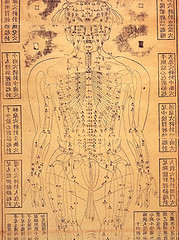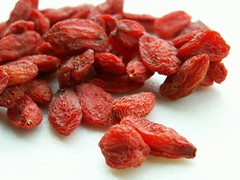 Alysia Anderson, L.Ac, MAcOM, of An Sen Clinic
Alysia Anderson, L.Ac, MAcOM, of An Sen Clinic
1. What brought you to Portland?
School brought me to Portland. In 2002, The Oregon College of Oriental Medicine was listed nationally in the top 3, for Acupuncture and Oriental Medicine schools.
2. Why did you decide to become an LAc?
I was working prior to school in Pittsburgh PA, at the Center for Complementary Medicine as a research associate. There, I was able to take a closer look at Acupuncture research as well as many other alternative healing practices/supplements such as EMDR, SAM-e, etc. I also grew up with parents that were very open minded so I was exposed to alternative medicine from a very young age. I was raised vegetarian, and surrounded by the teachings of Prem Rawat, which had a deep rooted effect on the evolution of my soul, and the beauty of life and its importance.
3. Tell me about your practice.
I operate a small business in the B & O building called An Sen Clinic (SE Industrial District). The name means peaceful heart in Chinese. I developed a space which I think helps contribute to the healing sessions we offer. It is cozy and relaxing, with a modern yet traditional oriental flare. An Sen Clinic offers a variety of healing modalities, including Acupuncture, Herbal Medicine, Diet and Nutrition, Full Body-Massage, Reflexology and Facial Rejuvenation. I feel that my practice and practice style is ever changing, evolving, and simplifying. I like to work on many types of issues, and I sort of see myself as a GP of Chinese Medicine. I also focus heavily on mind, body connection, and mesh together TCM with 5 Element, and musculoskeletal techniques. I have a great explanation of the services we offer @http://www.portlandacupuncture.net.
Where does your passion for the medicine come from?
The passion comes from it’s connection with nature and energy, which we are apart of and flowing with. I love that is offers something else, something deeper on a healing level than your average medicine. I like to listen.
4. Any advice for patients?
Think of yourself as training for a difficult race. Your body and mind have to be in peak shape, which isn’t always easy. Take it step by step, be firm in what you want to accomplish, but don’t beat yourself up. Get the support you need with the medicine we offer.
5. What is your favorite Portland restaurant and why?
Boy that’s tough. I guess I will mention my local fav “The Blue Monk” in the Belmont District, for the times I just need to simply walk up the street, sit down, and have their “cilantrotini”. I really like and jive with the east coast owners. It’s a great chill out spot.
You can contact Alysia at:
Portland Acupuncture at An Sen Clinic
107 SE Washington St. Suite #134
Portland, Oregon 97214
Clinic: 503-236-6633
Cell: 503-473-2914
Fax: 503-234-2185
www.portlandacupuncture.net
info@portlandacupuncture.net






 Photo by Paul: Anya says hello to Seth
Photo by Paul: Anya says hello to Seth











 I am now at the end of week two (out of three) of a
I am now at the end of week two (out of three) of a 